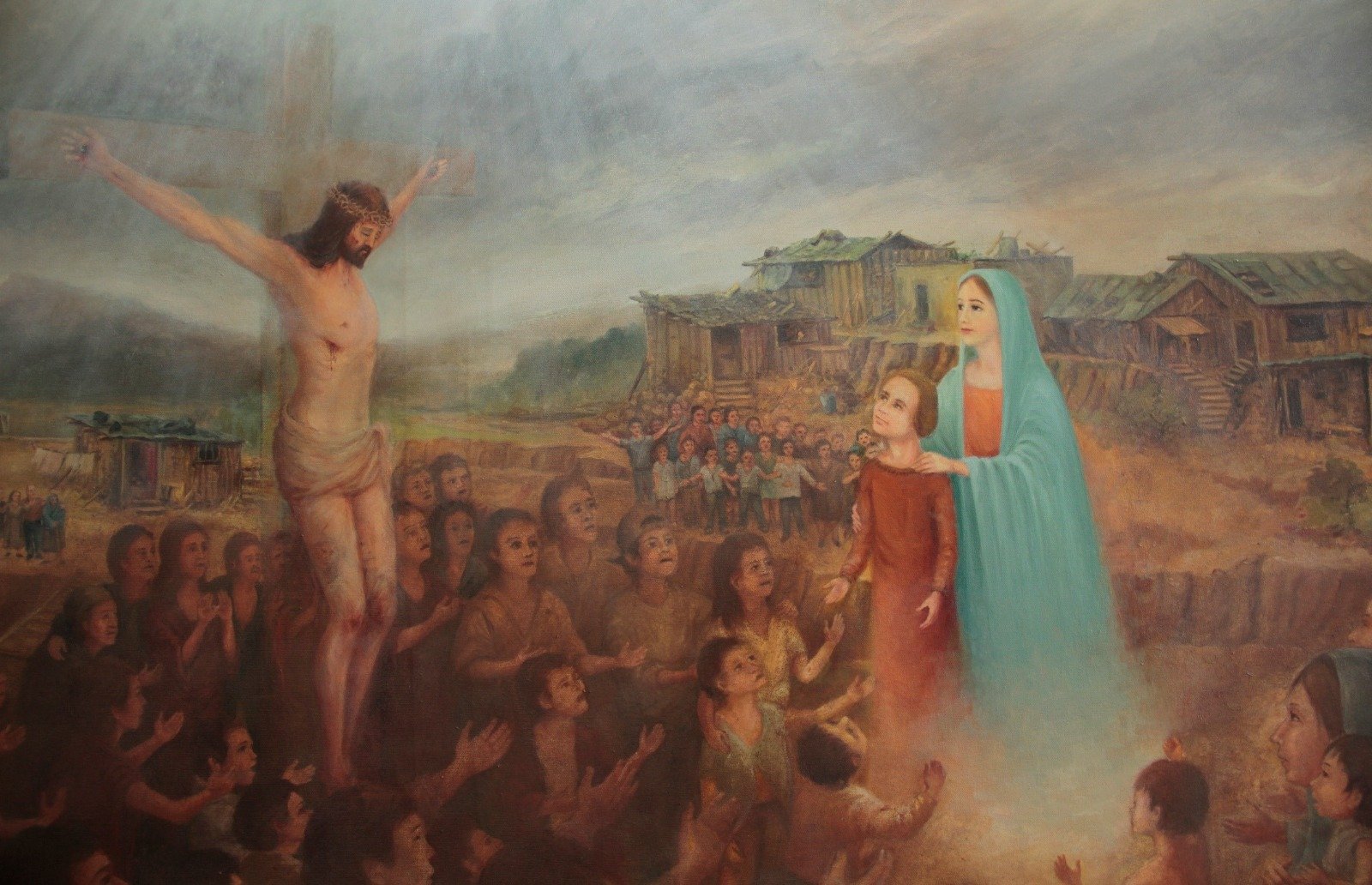Spirituality
Mother Teresa of Calcutta was greatly admired, loved, and respected for her zealous service of the poorest of the poor around the world. In 1979 she won the Noble Peace Prize "for her work of bringing help to suffering humanity.” Professor John Sanness, Chairman of the Norwegian Nobel Committee, gave the presenting speech and said that a slogan used by Albert Schweitzer, another Nobel Prize winner, could be applied to her as well: “Veneration for life”.
Fr. Joseph Langford, MC, cofounder of the MC Fathers, often said that some considered Mother Teresa of Calcutta to be a “female Albert Schweitzer”, and that this association was misleading because it overlooks the reason why she intentionally chose to serve the last, the least, and the lost. While it is certainly true that she had a great “veneration for life”, it was not this slogan that drew her to India in 1929. She left her home and entered the Institute of the Blessed Virgin Mary in Dublin, Ireland, because she felt a desire to serve God as a missionary and seek the salvation of souls that did not know of Him.
Icon - Catechism
During the investigative process leading up to the beatification of Mother Teresa in 2003 a treasure trove of letters and documents was discovered that had been previously unknown. This “Founding Grace Material” (FGM) revealed a deep interior life that helped to explain and clarify the charism of the Missionaries of Charity. The principal founding graces of Mother Teresa are related to her mystical experience of September 10, 1946, also called Inspiration Day within the Society of the Missionaries of Charity, and the inspirations, locutions, and interior visions received during the years from 1946-1948.
An artist in Mexico City, named Alejandrino Ramirez Palacios, was asked to paint a representation of the principal interior vision described by Mother Teresa in a letter to Archbishop F. Perier, SJ, on December 3, 1947. The image below is a copy of the painting housed in the residence of the MC Fathers in Mexico City:
This simple “icon” is a “window” or “doorway” into the beautiful spirituality of St. Teresa of Calcutta, and it contains a series of basic catechetical elements in a visual format.
Jesus Crucified: Composition of the place – Mother Teresa describes how she saw herself as a child in the arms of Mary beneath the Cross of Jesus Crucified. This is an interpretation of the Gospel of St. John, chapter 19, where little Teresa takes the place of St. John, the beloved witness.
In this vision she saw a great crowd gathered around the Cross that included “all kinds of people – very poor and children were there also.” They are looking at her because they do not know the Lord. They cry out to little Teresa: “Come, come, save us – bring us to Jesus.”
As Missionaries of Charity, we believe that each one of us is called to stand with Mary, St. Teresa of Calcutta, and all the poor gathered near the Cross of Jesus in His suffering Mystical Body as a Victim of Love. The Calvary of our times can be found in refugee camps, homeless shelters, and prison cells – wherever a broken and wounded heart is revealed. We are called to share the Thirsting Love of Jesus with all those who are poor and suffering.
Jesus cries out in John 19:28: ‘I thirst.’ Mother Teresa invites us all to draw close to Jesus suffering on the Cross in order to hear Him speak these words to our hearts. Today He thirsts for our love and our hurts.
In response to the Thirst of Jesus Mother Teresa raised her “chalice” of love and sacrifice to the lips of her dying Savior. She associates the verses of Matthew 25:40 with our service to anyone who is poor and in need: “Whatever you did to one of these least ones, you did it to Me.” In other words, Mother Teresa believed that service rendered to the poor is love offered to Jesus Himself.
Going Out In Search
The fruit of Mother Teresa’s encounter with Jesus Crucified was a supernatural impulse to go out of the convent in search of poor. Every Missionary of Charity shares in this divine mandate to walk the streets while looking for Jesus present in the poor and needy.
Missionaries of Charity serve those people who do not fall into any category of social service provided by the government, NGOs, and other agencies. We look for the ones that no one else wants to help – those that fall between the cracks of society and remain alone and abandoned. These little ones of the Kingdom of God are the focus of the Missionaries of Charity – the ones we seek to find and gather together.
"Right now, today, and everyday, Jesus is thirsting for my love. He is longing for me." — Mother Teresa
Remain at the Cross
Our spirituality requires a daily decision to remain with Mary, as a child, near the Cross of Jesus present in the suffering of the poorest of the poor. The darkness of this “hour” (cf. Jn.17:1) is filled with the Light of Christ and we are invited to radiate His Light to all we meet. At the Cross we will encounter the Thirsting Love of the Lord and from here go out in search of Jesus hidden in the poor.
“Come – carry me into the holes of the poor – Come be My light… They don’t know Me – so they don’t want Me.” — Jesus to Mother Teresa of Calcutta (1947).
Will you help us carry the Light of Christ into the suffering “homes” – “hearts” of the poorest of the poor by your prayers and service?








